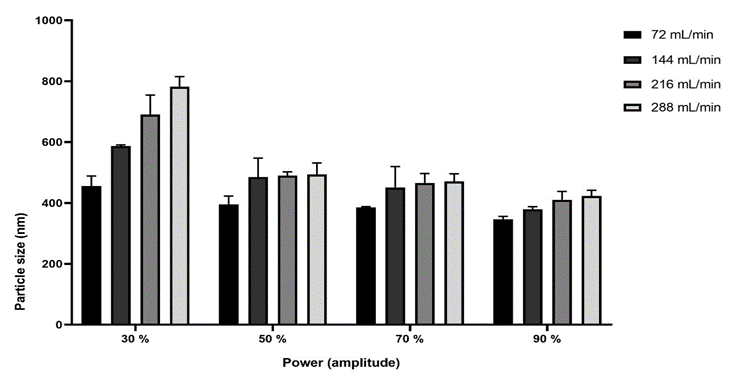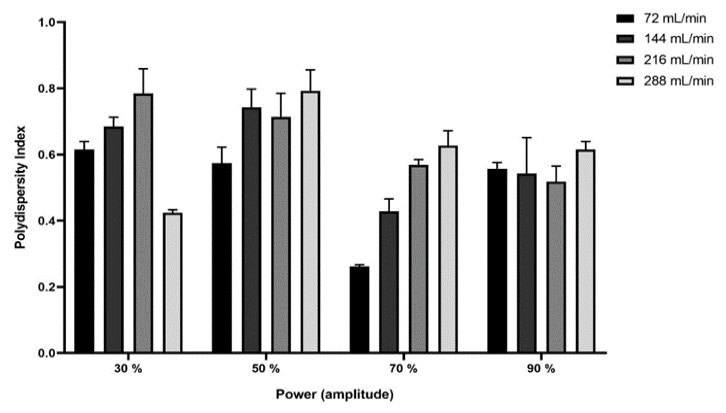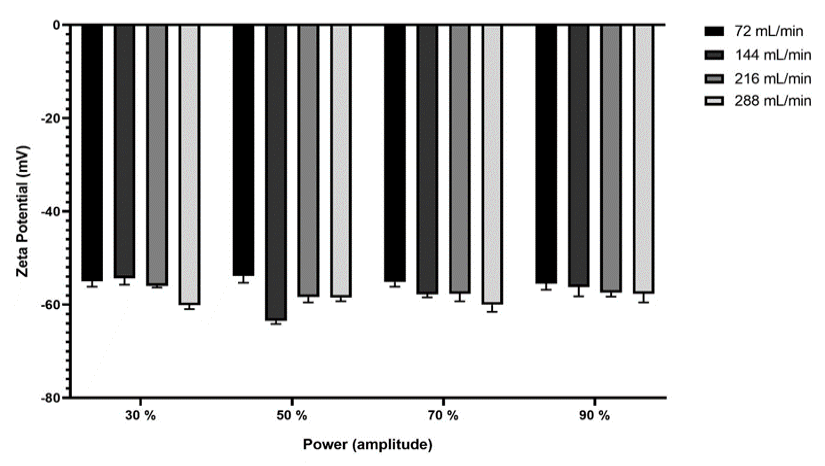Black Seed Oil-Alginate Nanoemulsion Characteristics Utilising an Ultrasonicator at Pilot Plant Scale
Black Seed Oil-Alginate Nanoemulsion Characteristics Utilising an Ultrasonicator at Pilot Plant Scale
Shaiqah Mohd Rus1*, Anika Z.M.R.2, Awis Sukarni Mohmad Sabere3, Mohd. Rushdi Abu Bakar4,5, Farahidah Mohamed4 and Abd Almonem Doolaanea6*
The BSO alginate nanoemulsion particle size of a flow cell sonicator at various flow rates and power (amplitude). Data are shown as mean ± SD (error bar) (n=3).
The flow cell sonicator’s PdI of BSO alginate nanoemulsion at various flow rates and power (amplitude). Data are shown as mean ± SD (error bar) (n=3).
The zeta potential of a flow cell sonicator’s BSO alginate nanoemulsion at various flow rates and power (amplitude). Data are shown as mean ± SD (error bar) (n=3).









